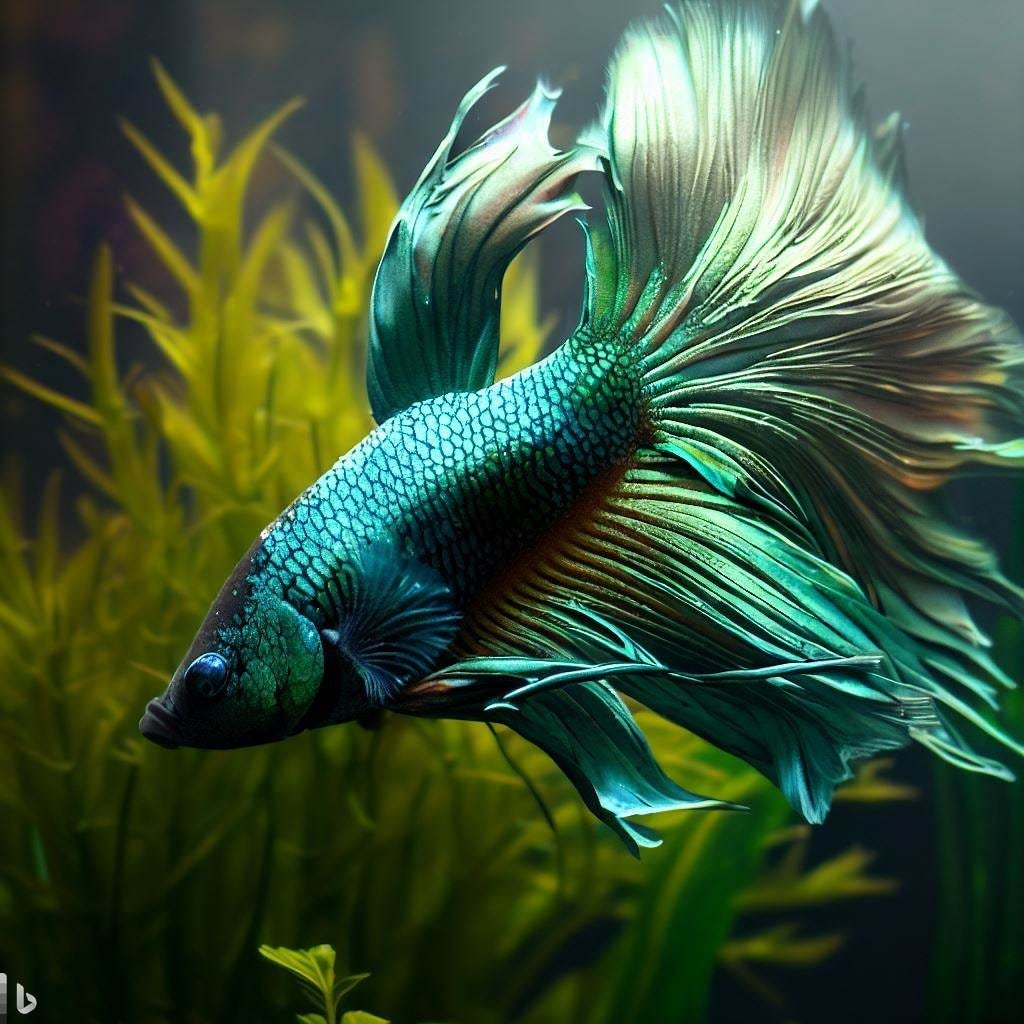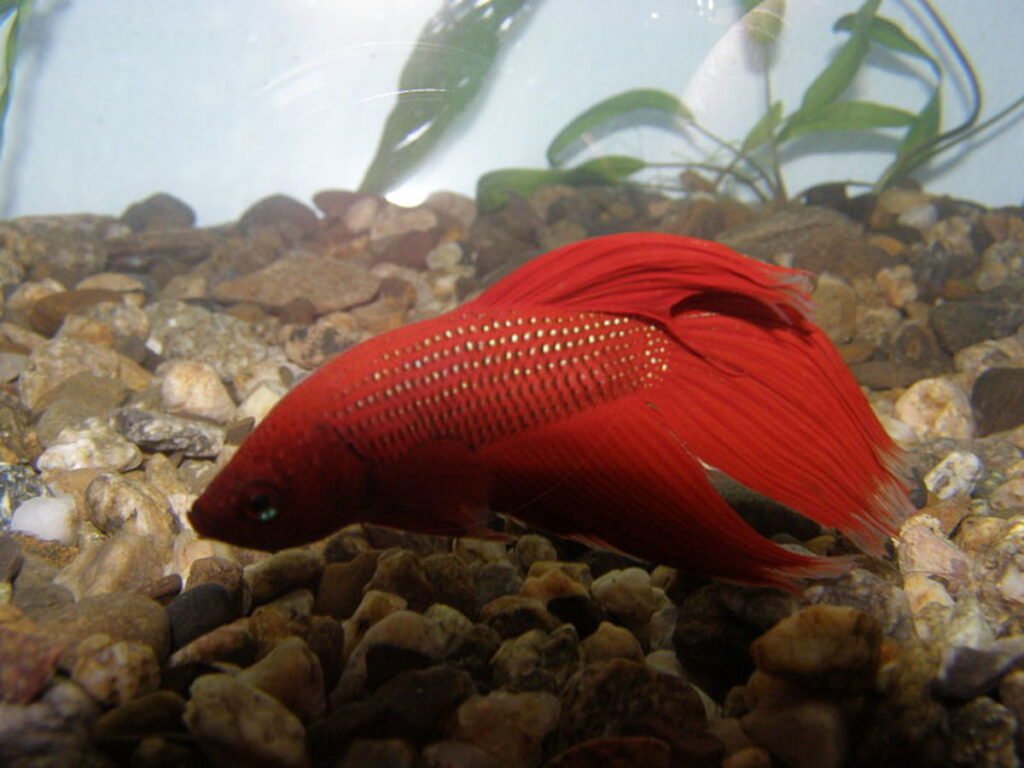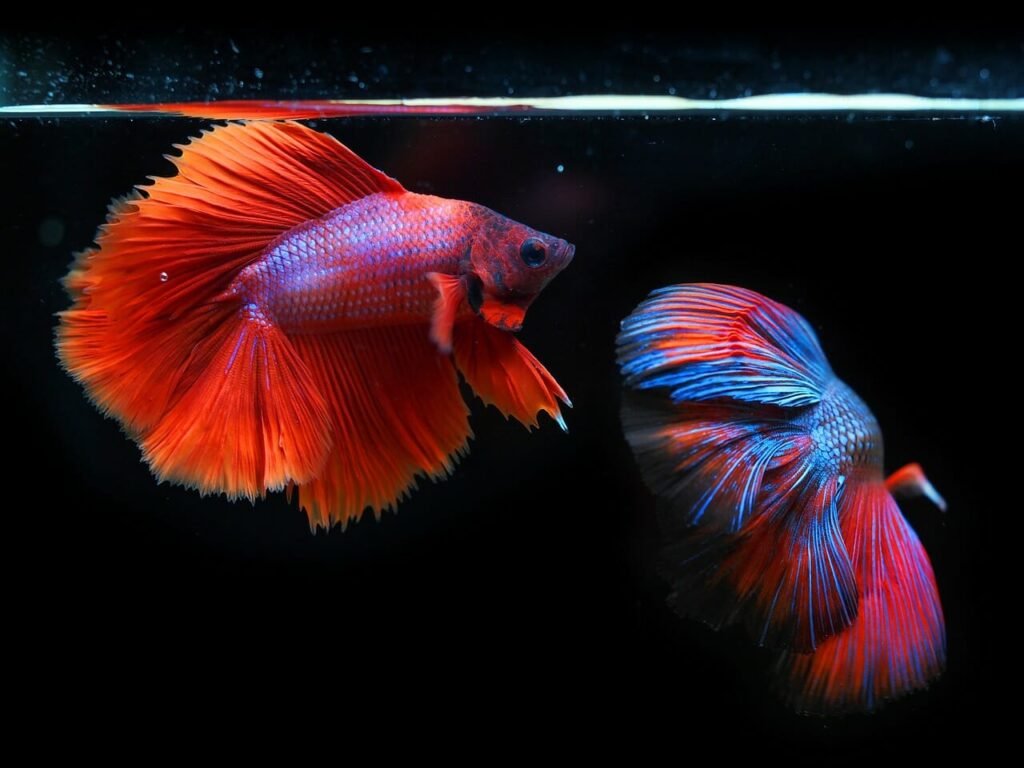Betta fish, or “Siamese fighting fish,” are one of the most popular and beautiful pet fish in the world. Vibrant colors, flowing fins, and feisty temperaments make Betta fish a popular choice for beginning and experienced aquarists alike. Yet even more than their visual beauty, owning a Betta means providing them with the care and environment to continue thriving.
In this blog, we are going to talk about everything that you need to know about Betta fish, its care, habitat, and added more interesting facts.
Table of Contents

What is Special About Betta splendens?
Betta fish (Betta splendens) are originally found in the shallow waters of Thailand, Cambodia, and Vietnam, where they live in rice paddies, ponds and slow-moving streams. They are labyrinth fish, meaning they can use air from the surface to breathe and can survive in low-oxygen waters.
Key Characteristics
- Colors: Betta fish are gorgeous in deep blue, red, purple, white, and even metallic colors.
- Fins: There are various fin types, such as veiltail, crowntail, halfmoon, and plakat.
- Temperament: Bettas are aggressive and highly territorial, particularly the males. They are also curious and interactive with their owners.
Betta Fish Care
In fact, it is a great deal easier to take care of a Betta fish when you buy an aquarium.
1. Tank Requirements
- Most people are led to believe that Bettas can live in small bowls when, in actuality, they thrive in larger tanks with tank filtration and heating.
- Tank Size: Minimum 5 gallons (the bigger the better).
- Water Temperature: Keep in 75ºF and 80ºF.
- They explode with lots of tiny, delicate fins, so make sure you keep the filter around gentle.
- Lighting: Aquarium lighting that works on a day/night cycle


2. Water Quality
- Dechlorinate Water Always dechlorinate tap water before putting it in the tank Always dechlorinate tap water before putting it in the tank
- pH: The pH levels in your betta fish tank should ideally be between 6.5 to 7.5.
- Performing Weekly Water Changes: Replace 25–50% of the tank water weekly for cleanliness.
3. Feeding Bettas
- The betta is a carnivore and requires a protein-rich diet.
- What to Feed: High-quality Betta pellets, freeze-dried bloodworms, or brine shrimp.
- How Often: 1–2 times daily, as much as they can eat in 2 minutes to help you avoid over and uneaten food.

4. Tank Mates
Male Bettas are aggressive and shouldn’t be kept with other male Bettas or long-finned fish. However, they are able to cohabit with some peaceful species, such as:
- Corydoras catfish
- Nerite snails
- Harlequin rasboras
- When adding new tankmates, always observe their behavior.


Betta Fish Habitat Setup
When providing your Betta splendens with the ideal setting to thrive, they will flourish and display their beautiful colors.
1. Essential Tank Additions
- Plants: Organic or fake plants offer cover and help alleviate stress.
- Decorations: smooth decorations and caves that provide shelter and encourage play.
- Substrate: A natural-looking environment is created using gravel or sand.
- Floating Items: Betta likes to lay upon floating leaves or Betta hammocks.

2. Breeding Betta splendens
- The exciting but challenging process of breeding Betta fish takes some preparation.
- Conditioning: Prior to breeding, give the male and female high-protein foods.
- Breeding Tank: Prepare a separate tank with warm water at 80°F and provide breeding conditions.
- Bubble Nests: The male makes a bubble nest in which to keep the eggs.
- Fry Separation: Once the fry are free swimming, separate all fry from the female to prevent aggression. The male takes care of the eggs until they hatch.

Fun Facts About Betta Fish
- Labyrinth Breathers: Bettas have an extra organ that allows them to breathe air at the water’s surface, making them able to live in low-oxygen environments.
- Another sign of a Betta fish being sick is Color Changes Betta fish can change color due to stress, mood, or health changes. Some even exhibit metallic colors!
- Intelligent Interactions: Bettas are known for their ability to recognize their owners and may follow your finger or flare their fins when they see you and are excited.
- Long Lifespan: With proper care, Bettas can live as long as 3–5 years or more.
- Cultural Significance: Betta fish have been used in traditional fish fights (illegal in many places now) in Thailand and are seen as a strength symbol.

Common Mistakes to Avoid
Mistakes from Bettas in Small Bowls: Bettas are active and talented fish that need space to swim and explore, which makes little bowls very unsuitable for their wellness.
- Overfeeding: Overfeeding can cause gastrointestinal bloating and a decline in water quality. Feed sparingly.
- Neglecting water changes: Dirty water leads to stress and diseases.
- Tankmates with Aggressive Fish: Be sure not to tank them with fish that nip fins or any aggressive species.

FAQs
Is it possible for Betta splendens to coexist with others?
Yes, but only with peaceful species that will not nip their fins or bother them. Keep away from other Bettas and aggressive fish.
How long do Betta splendens live?
With good care, Betta fish can live 3–5 years or even longer if maintained in ideal circumstances.




